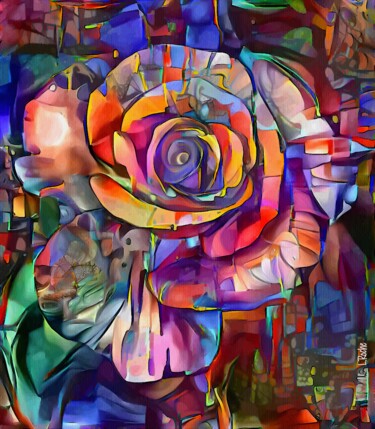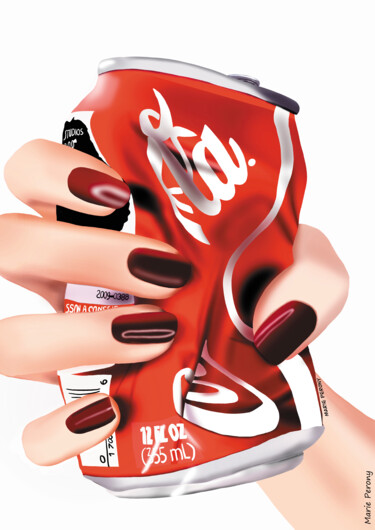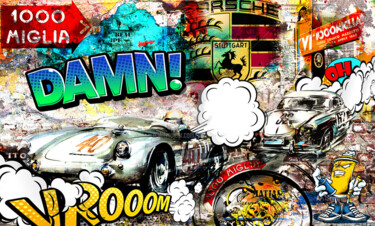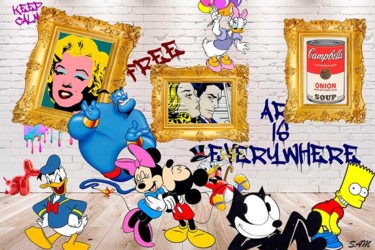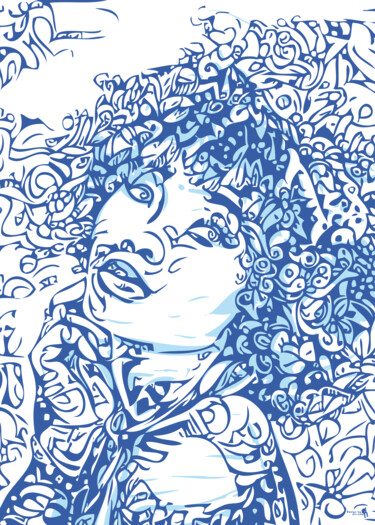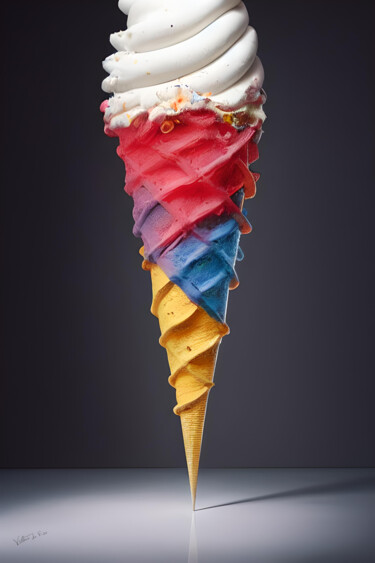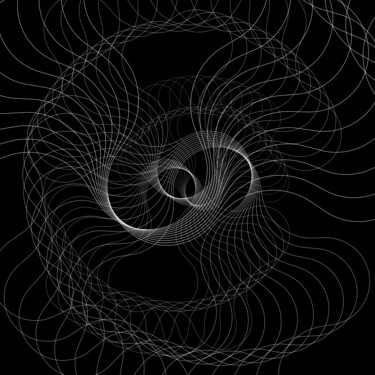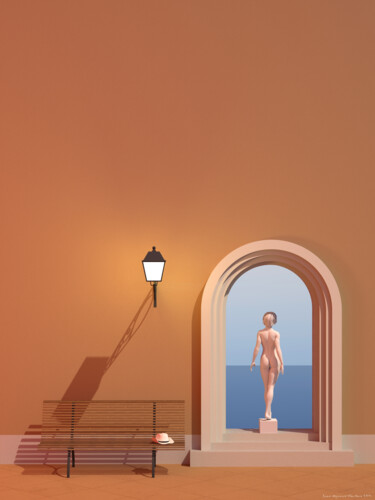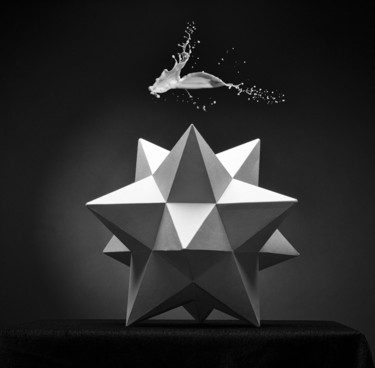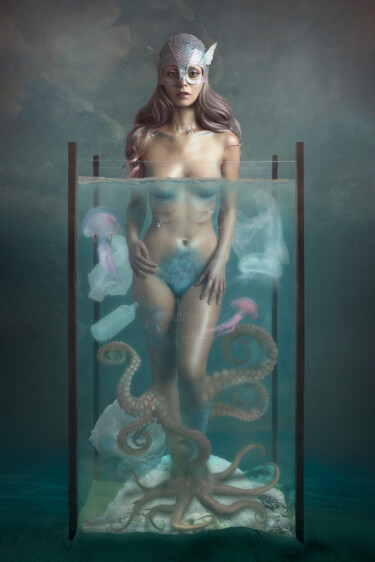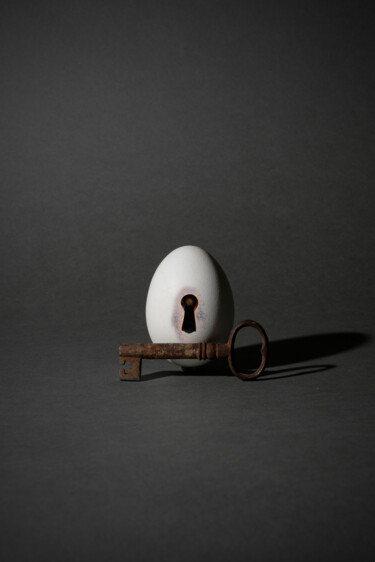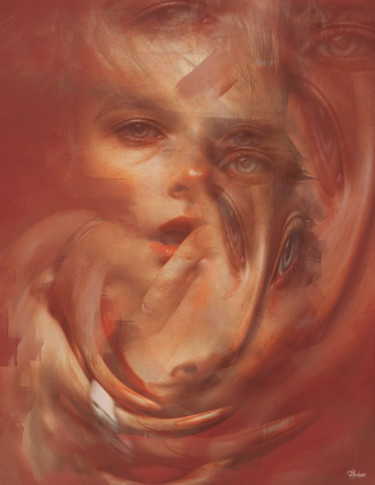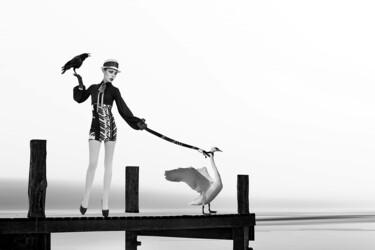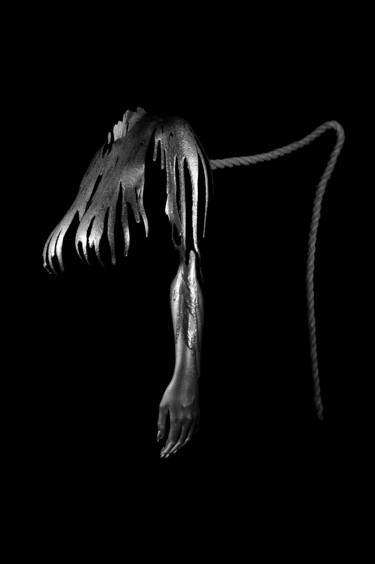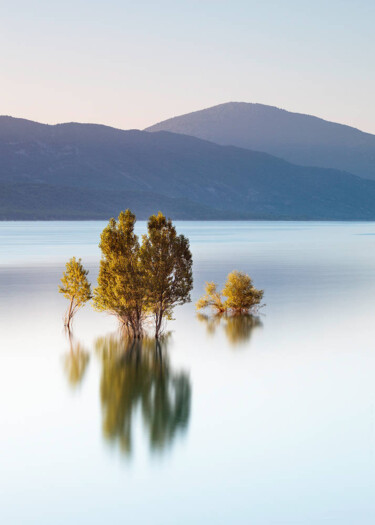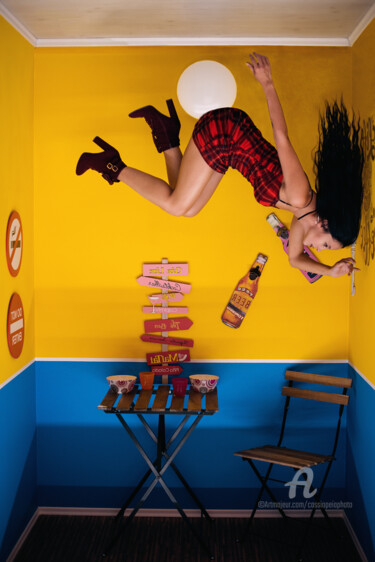 Livien Rózen, Raspberry, 2022. Digital painting on canvas, 50 x 40 cm.
Livien Rózen, Raspberry, 2022. Digital painting on canvas, 50 x 40 cm.
What is digital art?
"Digital art [...] is defined as an artistic work or practice, which uses digital technology as part of the creative process or exhibition presentation."
Wikipedia's simple, brief and comprehensive definition introduces us to the world of digital art, in which the characteristic aesthetic use of the computer is also sometimes referred to by the more specific terms of computer art, new media art, virtual art, immaterial art, interactive art, and telematic art, having the purpose of distinguishing the preferential and significant use of the multiple technologies and software, which have been occurring between the 20th and 21st centuries. At the same time, however, such a wealth of vocabulary has been far surpassed, since, to date, the most commonly used words for this type of artistic experimentation are: computer art, digital art and multimedia art. Precisely the latter two expressions turn out to be the most appropriate, also in order to give voice to that convergence in the digital medium of conceptual elements and languages, previously expressed by means of different media. With regard to the history of digital art, however, it is important to highlight how, despite the fact that computers have entered the world of creativity for some time now, there is still a tendency to speak of the aforementioned artistic practice as a new phenomenon, since, in a decidedly erroneous way, the narrative of computer art tends to start from scratch, whenever a new technology is established. In reality, however, the origins of digital art go all the way back to the experiments of the 1950s, in particular, those by the two programmers and mathematicians Manfred Frank and Ben Laposky, who, distinguished by a particular inclination and sensitivity toward graphics, created, by means of an oscilloscope, a mathematical function capable of generating a graphic representation, capable of being distorted by varying the wavelength of the light rays in the cathode ray tube. Finally, despite the undisputed merit of the aforementioned, however, it should be pointed out that the real development of computer art occurred only later, namely during the 1980s, when the PC began to become an accessible technology.
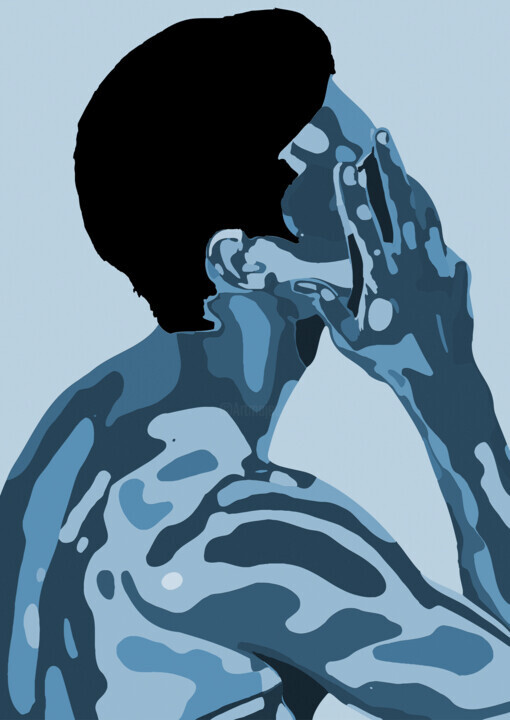 Steve Kalinda, Shades of azul 435, 2022. 2D digital work / digital painting on paper, 59.4 x 42 cm.
Steve Kalinda, Shades of azul 435, 2022. 2D digital work / digital painting on paper, 59.4 x 42 cm.
 Irem Bozkurt, She thinks of herself as a painting, 2020. Digital painting / digital 2D work on canvas, 92 x 65 cm.
Irem Bozkurt, She thinks of herself as a painting, 2020. Digital painting / digital 2D work on canvas, 92 x 65 cm.
Current events: difference between digital art and crypto art
Taking into consideration the most current dynamics of the contemporary art market, it is important to make a distinction between digital art and crypto art, as the latter form of computer art, also involving the aesthetic and design use of the PC, is necessarily linked to the most innovative Blockchain and NFT technologies. Trying to explain these last two terms in a simple way, a work of crypto art represents, for all intents and purposes, content in digital format, which is inventoried on a blockchain, i.e., a shared and immutable ledger designed to facilitate the process of recording transactions and tracking assets in a commercial network. In order to be sold, the said work is converted into NFT (non-fungible token), which is a cryptographic, unique and non-reproducible certificate that can only have a unique relationship with the product it represents. Consequently, the buyer of an NFT buys everything that the seller has attached to the transaction, generally the ownership of the work, but not its physical version. Finally, it is worth highlighting the great success that the latter technologies have had in the art world, so much so that Mike Winkelmann's (Beeple) NFT work, entitled Everydays - The First 5000 Days, sold at Christie in 2021 for $69 million, propelling the American to third place among the world's highest-valued, after Koons and Hockney.
 Jean-Marie Gitard (Mr STRANGE, The midnight bath, 2022. Photomontage on paper, 50 x 50 cm.
Jean-Marie Gitard (Mr STRANGE, The midnight bath, 2022. Photomontage on paper, 50 x 50 cm.
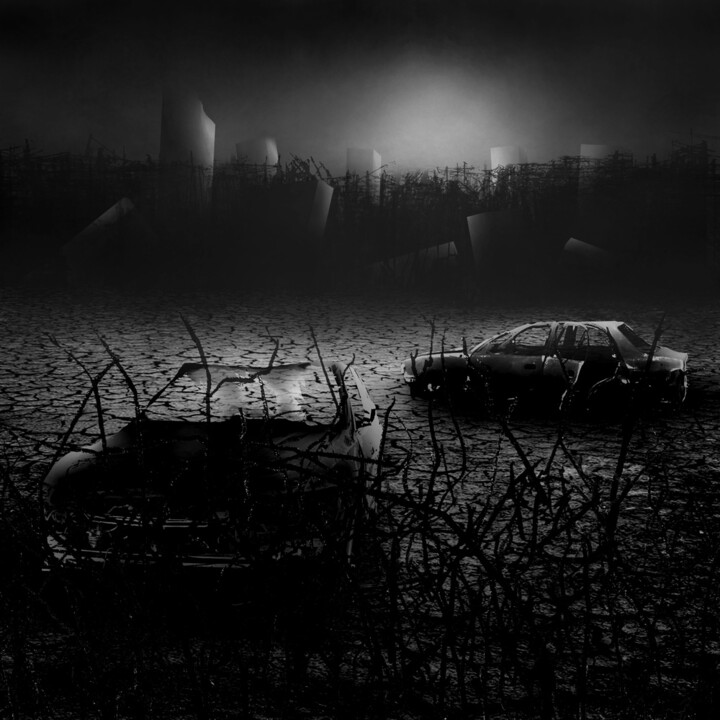 Vicent Creatik, Still life 3, 2022. Digital painting on aluminum, 90 x 90 cm.
Vicent Creatik, Still life 3, 2022. Digital painting on aluminum, 90 x 90 cm.
Digital artworks by Artmajeur artists
"Art is any form of activity of man as a reproduction or exaltation of his inventive talent and expressive ability."
The aforementioned peculiarities, indicated by the Oxford Languages Dictionary, also undoubtedly belong to the flair of digital art, despite the fact that, all too often, it has been criticized, since, compared to more traditional artistic expressions, it uses technological tools, which, according to the most skeptical, facilitate the realization of artifacts, generating real figurative and abstract "cheats." In this regard, however, it is worth highlighting how, in reality, the technological tools of digital creativity also require specific skills, which, although different, certainly cannot be improvised. In addition, now for a long time within the art world, what often decrees the success of a work is, rather than the mode of execution and manual skill, the idea behind the realization of the artifact. It is precisely this strong creative flair that distinguishes the digital art production of Artmajeur's artists, particularly that of Bruno Béghin, Nedaa Elias, and Marjoline Delahaye.
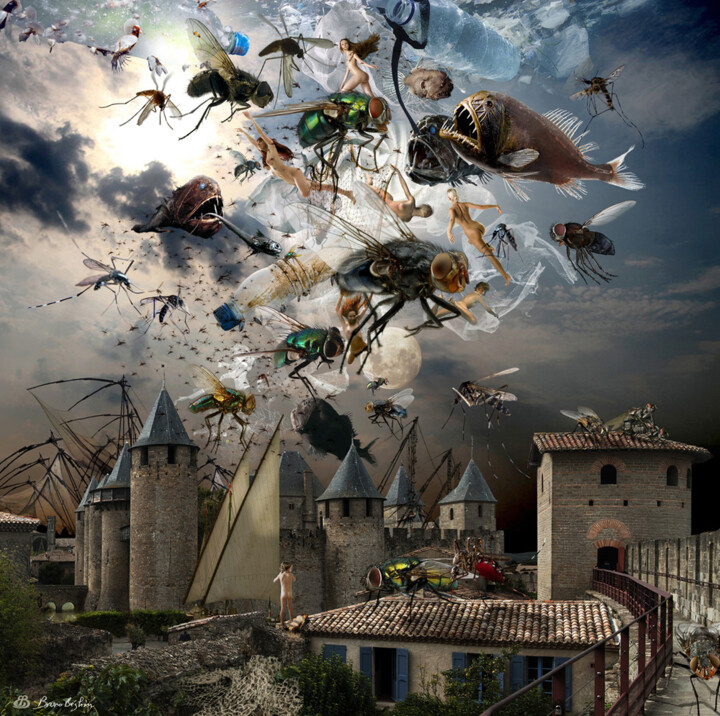 Bruno Béghin, Emotions, 2022. Photomontage on paper, 95 x 95 cm.
Bruno Béghin, Emotions, 2022. Photomontage on paper, 95 x 95 cm.
Bruno Béghin: Emotions
Bruno Béghin is a French designer born in 1958, whose work is strongly marked by two great passions: photomontage and Carcassone, i.e., his beautiful hometown, which he often does his best to highlight and enhance. Indeed, frequently his digital artistic investigation finds its place in a purely medieval atmosphere, aimed at reproducing the historical architecture of the aforementioned urban context. This personal vision of the world, indelibly linked to the places of the most important memories, is accompanied by a type of approach to the rendering of reality, which draws inspiration from the dream world, in which the most disparate themes are staged, such as those related to mythology, current events, history and ecology, with the aim of arousing in the viewer aesthetic emotions of a visionary and surrealist type. Moreover, in some circumstances, Carcassone also becomes the scene of apocalyptic events, which, as in Emotions, are probably intended to allude to the precariousness of earthly life. Speaking of contemporary art history, a well-known master, who has contributed new life to surrealism, in turn creating fantastical worlds, is 3D artist Gilles Tran, whose three-dimensional spaces pursue the intent to amaze and draw the viewer inside those unexpected events, which so often surprise us in life.
 Nedaa Elias, Levant cityscape #1, 2022. 2D digital work on paper, 121.9 x 91.4 cm.
Nedaa Elias, Levant cityscape #1, 2022. 2D digital work on paper, 121.9 x 91.4 cm.
Nedaa Elias: Levant cityscape #1
Syrian artist Nedaa Elias' figurative investigation mainly addresses environmental and cultural issues concerning contemporary Middle Eastern societies, such as, for example, the discontinuation of the use of Arabic script, the effect of bird migration on the Gulf economy, etc. In addition, his works also aim to immortalize the existing relationship between people and cultures, which, when analyzed through different perspectives, leads viewers to interact with each other, fostering the more spontaneous and natural acquisition of meanings inherent in artistic inquiry. In particular, regarding Levant cityscape #1, this digital artwork is part of a series aimed at celebrating the collaboration between the artist and artificial intelligence, materialized through a skillful use of AutoCad, with which it was possible to immortalize the dense expanse of buildings in the Levant region, referring to the typical overlays of the collage technique. Speaking of the latter 'procedure, a digital collage that has definitely marked contemporary creativity is the aforementioned Everydays - The First 5000 Days by Beeple, a composition of 5000 images, collected by the artist following a precise chronological and programmatic order, which, when observed as a whole, looks like an abstract work of art.
 Marjoline Delahaye, Mr. Fox, 2022. 2D digital work / painting / photomontage on linen canvas, 118.8 x 84.1 cm.
Marjoline Delahaye, Mr. Fox, 2022. 2D digital work / painting / photomontage on linen canvas, 118.8 x 84.1 cm.
Marjoline Delahaye: Mr. Fox
Marjoline Delahaye's artistic production comes from a combination of sketching, digital effects and digital painting, aimed at capturing the multitude of human passions, such as dancing and sports, along with other small and pleasant things, which animate our daily lives. This narrative, precisely because of its particular technique of execution, finds a place on a wide variety of media, arranging itself, in particular, on brushed aluminum, acrylic, wood and canvas panels. Speaking of Mr. Fox, the digital work is part of a series, aimed at portraying animals in the guise of workers, in order to become symbols of the most stereotypical human attitudes assumed in the office. For example, if we try to imagine Mr. Fox in the workplace, he, being a fox, will surely be shrewd, cunning, quick and adept at business, so much so that his thoughtful and inquisitive gaze seems to allude to a reflection, having the purpose of planning the most convenient move to make. About the clothes, on the other hand, these might make us think that Mr. Fox is a real talent in the creative sphere, an area in which no particular or excessive formality is required. After this imaginative excursus, about the background of the work, the circle arranged behind the animal seems to be borrowed from the works of Pascal Blanché, a renowned contemporary digital artist, whose science fiction work is characterized by perfect shades of color, aimed at bringing wonderful worlds to life.

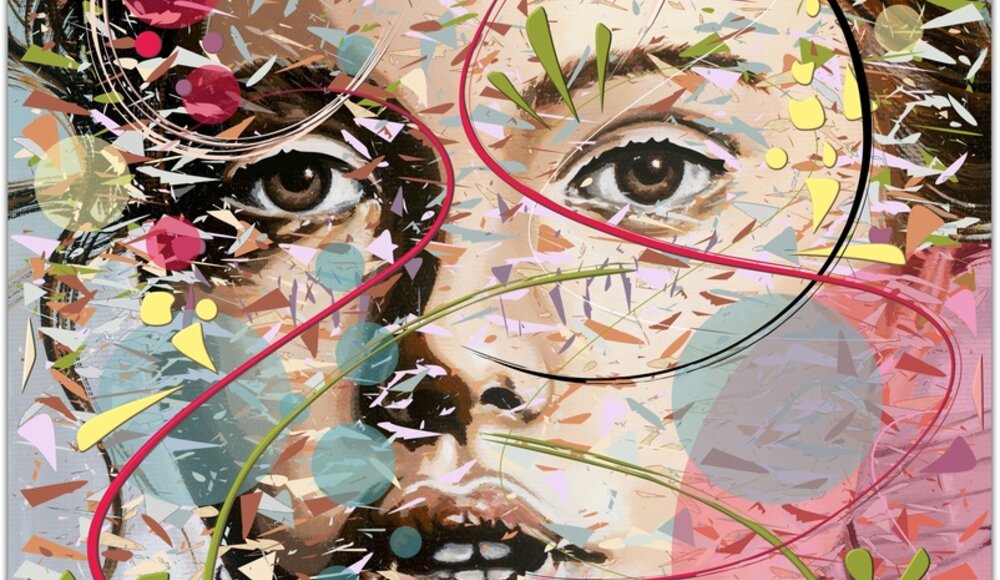
 Olimpia Gaia Martinelli
Olimpia Gaia Martinelli
